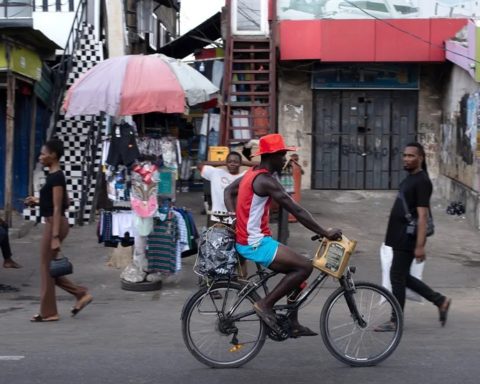HAVANA, Cuba. – During the first decades of the last century, movie theaters multiplied throughout Cuba. In the capital alone, in 1958 there were 138 of them, of which very few remain today in their original function.
A novelty were the Havana drive-in cinemas, where you could watch movies from your car. This modality, which appeared in the United States in 1933, arrived in Cuba in the 1950s.
In Havana there were three drive-in cinemas, located in peripheral areas of the city, always next to roads with easy access to them.
The first, inaugurated on October 10, 1955, was established on land on Calzada de Vento, between the Casino Deportivo neighborhood and 100th Street, near the railroad line, in the current Miraflores neighborhood. It had capacity for 800 vehicles, and was owned by the company Cines Aéreos SA.
The other two were founded in 1958, one in the Marina Tarará, owned by the company Gil y Wester, and the best known of all, Novia del Mediodía, on the land where the highway of the same name intersects with the end of Avenida 51, in Arroyo Arenas.
The Novia del Mediodía, which occupied part of the Cotillero and Kakolota estates, was owned by the company formed by the architect Miguel Ángel Moenck Peralta, whose president was Elwood Simpson and its vice president Jack Dumont.
The Novia del Mediodía and Tarará drive-ins, although they had a better structural design, were smaller than the Vento one, which had an area of 52,353 square meters, with capacity for 454 cars in 11 parking lines.
A giant screen measuring 36.58 by 18.29 meters, located at a height of 6 meters above the ground, allowed vision from all points of the installation.
Each parking lot had a post with a horn, through which the sound reached the attendees. To maintain a comfortable temperature inside the cars, hoses through the windows provided air conditioning from underground equipment.
On the porch of the entrance, there was a billboard to inform about the films that were shown and an admission fee was charged (50 cents).
I remember those drive-ins, but I never went to them because they were prohibited for minors and my family didn’t have a car.
A friend who is older than me told me that he used to go to the Vento drive-in with the girlfriend he had at the time, because the darkness and being inside the car allowed them to have more privacy than in normal cinemas.
The three drive-ins that existed in Havana disappeared in the 1960s because they were considered capitalist symbols by the communist regime.
Long before drive-in cinemas, there were open-air cinemas or summer cinemas, very in line with our climate. The first, founded in July 1909, was on the corner of Prado and Malecón and was called Miramar Garden.
Created in 1915, there was a movie tent on Belascoaín Street, near Cuatro Caminos, called La Tienda Negra, belonging to Santos and Artigas-Díaz Quesada (the latter was the producer of nine films and is considered the father of national cinematography) .
Vedado also had this type of cinemas. One was the Mascota, created in 1915, which was on the corner of 17th and 2nd streets, and the Trianón, founded in 1920, which after being remodeled, would become one of Havana’s luxury cinemas.
On the Paseo del Prado, in front of the old Casino Español (today the Palacio de los Matrimonios), the Maxim was created in 1921, with capacity for 1,500 people.
Also in Prado, between Virtudes and Ánimas, the Royal was created in 1918, looking like a circus tent, whose owners were Rafael Almeida and Elio Roselló.
Marianao also had some of these facilities. On 27th Street, in the current Buenavista neighborhood, there was one of these so-called Summer Cinemas with 600 seats and 20 boxes, one of which was dedicated to the mayor.
The structure of these open-air cinemas was simple: a pediment and columns with their subscription boxes. The only parts with a roof were the projection booth and the toilets, located behind the screen.
They had rainy days against them. When it started to rain, they suspended the screening of the film and the user was left without seeing the end.
Exceptional and innovative due to its movable roof was the Verdún cinema, located on Consulado Street between Ánimas and Trocadero. Opened in 1919, it was first a theater. It became a cinema in 1935 and remained in operation until the end of the 1980s.

















